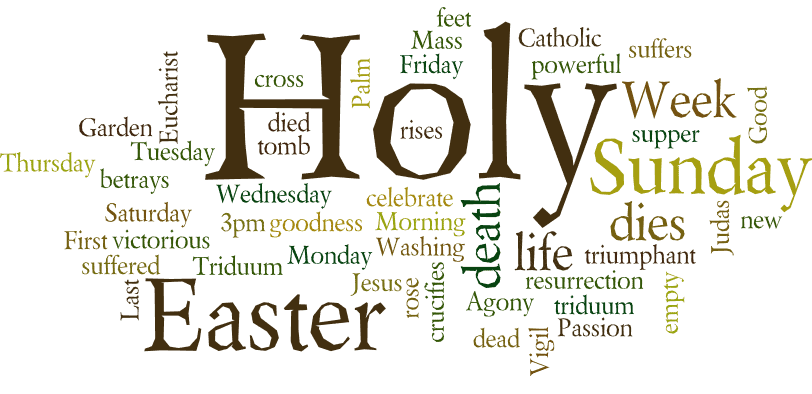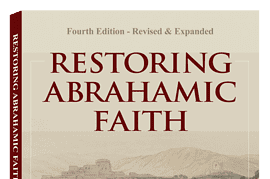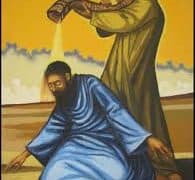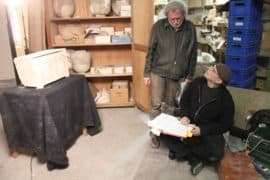 Once again “Holy Week” has arrived. Today is Palm Sunday, with Easter one week away. So one might say this week is “doubly holy,” in that it binds together what Jesus as a Jew would have been intimately familiar with his entire life–Passover and the Days of Unleavened Bread–and the final week of his life. Yet within a hundred years of his death the new tribe called “Christians” by the Romans, were creating new holy days, untied to the Jewish calendar, and conveying meanings that would be wholly foreign to the historical Jesus the Jew.
Once again “Holy Week” has arrived. Today is Palm Sunday, with Easter one week away. So one might say this week is “doubly holy,” in that it binds together what Jesus as a Jew would have been intimately familiar with his entire life–Passover and the Days of Unleavened Bread–and the final week of his life. Yet within a hundred years of his death the new tribe called “Christians” by the Romans, were creating new holy days, untied to the Jewish calendar, and conveying meanings that would be wholly foreign to the historical Jesus the Jew.
If you are ready for some really in-depth study and reading on all aspects of these holidays–or holy-days–you will find links to much of what I have written over the years listed out below. I have also provided a convenient graphic at the bottom of this post with a breakdown of the dates of “Holy Week” in the year 30 CE–which I take to be the year of Jesus’ death.
Just about everything about this week is controversial. Did Jesus eat his last Supper on a Tuesday, Wednesday, or Thursday night? Was that last meal a Passover or a meal the night before Passover? What day of the week was Jesus’ crucifixion–Wednesday, Thursday, or Friday. What day was the tomb found empty–Saturday night or early Sunday morning. I think all these questions can be answered clearly and rather definitely–as well as the year of the crucifixion–which ranges from 29-33 CE in various views. Here is my take on this cluster of questions with links to much much more–including the very nature of the Last Supper–which I think was a creative development of Paul as it is practiced today. If you are interested in these matters read on, and whether you agree or disagree I think you will learn something new.
This year Friday April 15th is the 14th of the Jewish month of Nisan, with the festival of Passover beginning after sundown as the 15th of Nisan begins. Jews around the world will gather to solemnly remember and celebrate the LORD God who brought enslaved Israel out of Egypt that night with a strong Hand (Exodus 13:9; Deut 4:7; 16:1). Increasingly, thousands of Christians, most of whom are neither Jewish nor of Jewish background, join in the celebration, convinced that the “Last Supper,” on the night Jesus was betrayed, was in fact a Passover meal. Many Jews are not too happy about the ways in which Christians have begun to celebrate “Passover,” but with entirely different meanings than those reflected in the Torah, stirring a bit of controversy in some Jewish circles, see here and here.
Leaving our contemporary scene aside for now, if you would like to delve deeply into the historical side of things, particularly what was going on in the year 30 CE, in Jerusalem, beginning on Palm Sunday, and leading up to the night Jesus was betrayed, his crucifixion, and what followed, here is a series of posts that will take you through the week, touching on many of the mysteries and controversies this convergence of Jewish and Christian traditions and memories of Jesus’ Last Days in Jerusalem have stirred. You are welcome to share these links on social media and with others. There is a lot here, but I would love for my readers to consider all of these posts, as the cumulative effect is pretty remarkable:
The Making of a Messiah: Did Jesus Claim to be the Messiah and Anticipate His Suffering and Death?
The Last Winter: A Jesus Hideout in Jordan
Last Days of Jesus: A Decisive Confrontation
Last Days of Jesus: A Final Messianic Meal
Was Mary Magdalene the same person as Mary of Bethany? A Guest Post from Jeffrey Bütz
Was Jesus’ Last Supper a Passover Meal?
Eat My Body, Drink my Blood: Did Jesus Every Really Say This?
Jesus Died on a Thursday not a Friday
Standing Again with Jesus: Ecce Homo Revisited
The Strange Ending of Mark and Why it Makes All the Difference
The Most Important Ten Verses of the Gospels to Read Easter Morning
What Really Happened Easter Morning?
The Surprise Ending of the Lost Gospel of Peter
What Did Paul Claim to Have Seen? “Last of All He Appeared Also to Me”
Why a “Spiritual” Resurrection is the Only Sensible Option
How Faith in Jesus’ Resurrection Developed: An Old New Hypothesis
The Jesus Tomb Story: Does the Evidence Add Up?
The 1980 Discovery of the East Talpiot “Jesus Tomb”? What We Know Forty Years Later!
New Evidence on the James Ossuary and its Probable Connection to the Talpiot Tomb










Comments are closed.